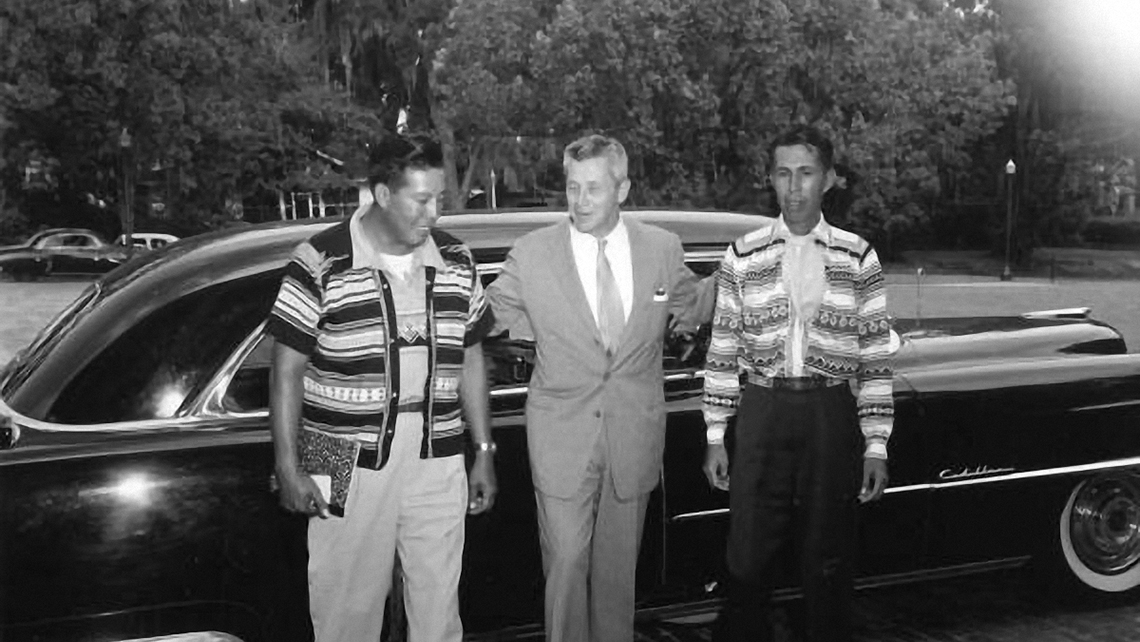When the Miccosukee Tribe is in the news, as it has been recently, the perennial question comes up: Are they the same as the Seminoles?
As they say, it’s complicated.
But one thing is certain: They would not have their separate tribal status without a little help from the most unlikely source.
That would be Fidel Castro.
Yes, this is another chapter in our believe-it-or-not South Florida history.
Sun-Sentinel reporter Deborah Ramirez told me the story, as told to her by a tribal elder decades ago.
The Miccosukees, then a group of about 400, insisted they were a separate tribe from Florida’s Seminoles and went to the U.S. Bureau of Indian Affairs to be recognized as such. Even though they lived outside of the Seminole reservations, they were turned down because of historic ties.
Tribal elders sought an attorney after that, and the lawyer advised them that it would help the cause if another country recognized them. Turned out there was a newly minted government in a nation very close by.
So in 1959, led by chieftain Buffalo Tiger, elders in colorful tribal dress showed up in Havana, where they were swarmed by a host of men in battle fatigues. You can imagine that scene.
The elders came back with recognition from Cuba’s president Fidel Castro – as a sovereign nation! And not only that, Castro offered them political asylum and even land for a settlement.
Shortly after they returned to Florida, tribal elders got a visit from FBI officials, wondering what exactly they were doing down in Communist Cuba. In exchange for a promise the tribe would have no further dealings with Castro, the U.S. government would reconsider its previous decision. In 1962, came the official word: Why certainly, the Miccosukees of Florida were a separate tribe.
So what was their case? Historians say that in the 1770s all Florida Indians were lumped into a group known as Seminoles, meaning “wild people” or “runaways.” The Seminoles included Creeks, Yuchis, Yamasses and even runaway slaves who found refuge among them.
The Miccosukee (who spoke the Mikasuki language) were part of the Creek Nation. During the Indian Wars of the 1800s, where U.S. militias pushed the Native Americans west and south, most Miccosukees were driven west. But about 100, mostly Mikasuki-speaking Creeks, never surrendered. Instead, they hid out in the Everglades.
The present tribe numbers more than 600 people who claim to be direct descendants of those who eluded capture.
The complication is that many (but not all) of Florida’s 4,000 Seminoles also speak Mikasuki. The famous Indian chief Sam Jones – who battled Maj. William Lauderdale and others – is also referred to as Arpiega, a Miccosukee chieftain. Though commonly referred to in our history as a “Seminole,” Sam Jones would have seemed to fit the Miccosukee pattern. He never was captured, and he lived out his days in Everglades encampments, while so many other “Seminoles” settled in the reservation community that now runs the Hard Rock Casino and other enterprises.
The original 100 Miccosukees who hid out in the Everglades adapted to living in small groups in temporary “hammock-style” camps all over the swampy wilderness. They resisted efforts to become assimilated for about 100 years. Finally, after the Tamiami Trail highway from Miami to Tampa was built in 1928, the tribe began to accept living in “the New World.”
Is all this perfectly clear?
So the Miccosukee Tribe now has its own large resort and gaming enclave, museums and school. It also has leadership councils and a tribal police force, which grabbed headlines during a recent custody battle over a newborn. The tribe has even sponsored a NASCAR racing team.
And its official status certainly owes a nod to that odd amigo in time of need, the late Fidel Castro












